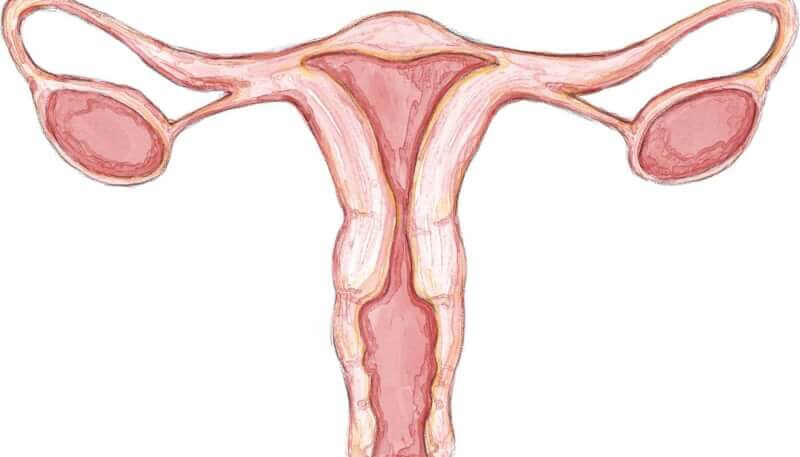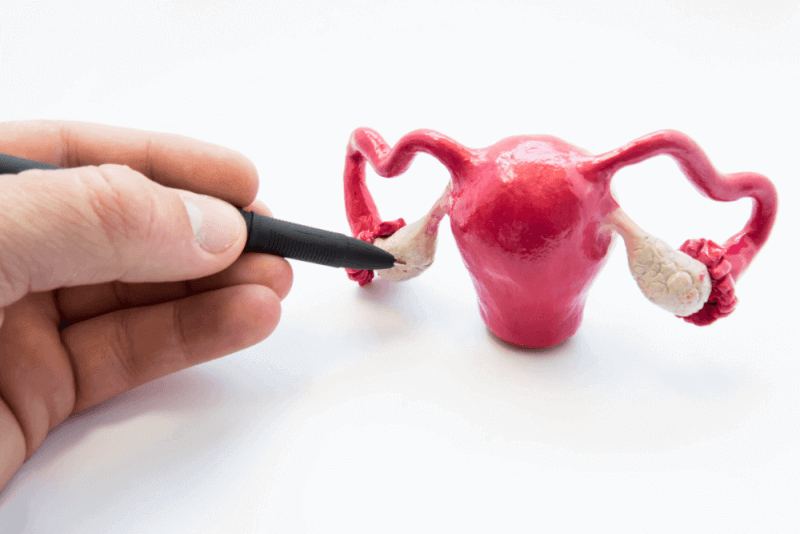What is Vaginal Fungus?
Vaginal fungus, which is one of the common diseases in women, is also called candidiasis. Under normal conditions, the vagina has its own unique flora. This flora includes some bacteria and fungal cells. However, if the vaginal flora is out of balance for any reason, yeast-type fungal cells called candida proliferate. The proliferation of candida fungal cells also causes vaginal yeast.
Vaginal fungus is characterized by swelling, excessive itching and discharge. Medicines used in the treatment of fungal infections relieve the symptoms within a few days. In more serious cases, it can take up to 2 weeks for symptoms to subside. Vaginal yeast infections can recur over time.
Vaginal yeast disease damages the tissues around the vagina called vulva. Vaginal fungal cells that cause irritation of these tissues are a disease seen in 75% of the society. Vaginal yeast infections, which are one of the female diseases, are not considered as one of the sexually transmitted diseases. Although vaginal fungus can be sexually transmitted, it is more common in women who do not have an active sexual life.
What is Candida?
Candida, a type of fungus, settles in various cavities of the body. The most common places they are found are the intestines, mouth and vagina. This type of fungus, which can only live in the human body, is part of the body's natural flora. There are more than two hundred varieties of candida. Since these pathogens, which normally live without any problems, are opportunistic pathogens, they reproduce rapidly in case of disruption of the natural flora and cause infection.
Causes of Vaginal Fungus
The fungal cells that cause vaginal fungus are a type of fungus found in the natural flora of women's vaginas. However, the lactobacillus bacteria in the natural flora of the vagina keep the candida fungus that causes yeast infections under control. In case of changes in the balance of beneficial bacteria in the body or a decrease in beneficial bacteria, candida fungus cannot be kept under control and increases rapidly.
Especially the use of antibiotics is one of the biggest factors in reducing the number of beneficial bacteria in the body. In addition to the use of antibiotics, other factors that cause vaginal fungus are as follows:
- Insomnia
- Stress
- Use of birth control pills
- Hormone treatments that cause estrogen levels to rise
- Hormone imbalances in menstrual cycles
- Excessive consumption of sugary foods
- Unhealthy eating
- Weak immune system
- Diabetes
- Pregnancy
- Use of cosmetic products that are not suitable for the pH of the genital area in cleaning the genital area
- Use of pools that have not been properly cleaned
- Use of synthetic underwear
- Daily pad use
- Hidden diabetes
- Cortisol-containing drugs
The most common type of fungus that causes vaginal yeast infection is the yeast fungus called candida albicans. Although this type of fungus is common, it is one of the easiest types of fungus to treat. Fungal strains that recur and are resistant to treatment can be different versions of candida fungus. In this case, laboratory tests can be used to determine the correct species.
Vaginal Fungus Symptoms
The symptoms of vaginal yeast can be uncomfortable and severe enough to affect daily life. Common symptoms of vaginal yeast infections include the following.
- Pain during sexual intercourse
- Burning sensation during urination
- Whitish-gray and clumpy vaginal discharge
- Watery discharge
- Discharge in the form of curdled cheese
- Swelling around the vagina
- Redness of the surrounding tissues of the vagina
- Pain in the vagina
- Itching in the vulva tissue
- Rash
- Vaginal itching
Itching
Itching, which is one of the main reasons for patients to consult doctors, can occur in the inner part of the vagina as well as in the outer part called vulva. In some patients, the itching is so severe that it can irritate the vagina and even cause bleeding. During gynecological examination, a red and edematous vulva is usually encountered.
Current
One of the most common symptoms of vaginal fungus is discharge with the consistency of milk curd. This discharge, which is white, lumpy and dark in consistency, is seen intensely in some patients, while in some patients it remains inside the vaginal canal due to its dense consistency.
Pain During Sexual Intercourse
Dyspareunia during sexual intercourse is also one of the symptoms of vaginal fungus. Patients often complain of burning, especially during and after the first intercourse.
Fragrant Currents
Odorous discharge is basically not one of the symptoms of vaginal yeast. However, it is common in mixed infections. Mixed infections involve multiple infections occurring at the same time.
Swelling and Edema of the Inner Genital Lips
Swelling of the inner labia due to edema is also one of the symptoms of vaginal yeast.
Aseptomics
In some cases, vaginal yeast infections do not cause any symptoms. In this case, patients receive the diagnosis during a vaginal examination or SMEAR test.
Vaginal Fungus Diagnosis Methods
It is extremely important to get the correct diagnosis before preparing a treatment plan for vaginal yeast. For this, specialists first find out the patient's complaints and whether they have had a fungal infection before. A gynecological examination, including examination of the vaginal wall, cervix and external genitalia, should then be performed. Since the symptoms of vaginal yeast are similar to those of cervical cancer, a gynecological examination is mandatory. During the gynecological examination, if necessary, some cells from the vagina should be collected and laboratory tests should be performed.
What to Do to Prevent Vaginal Fungus
Vaginal fungus is one of the recurrent diseases. For this reason, it is important to know the means of protection and to apply them rigorously.
- One of the most important things to be done to reduce vaginal yeast infection is not to wear tight clothes. Underwear, especially tights, pantyhose and pants should not be too tight. If the clothes you use are too tight, it causes irritation of the area and naturally disrupts the flora.
- Foam baths and the use of perfumed hygiene products such as tampons or pads should be avoided. If these products are in constant contact with the vaginal fungal area, they can cause disruption of the natural bacterial flora, irritation and allergic reactions.
- Bathing with excessively hot water or using excessively hot water in hot tub baths is also one of the factors that increase the risk of vaginal yeast infection. For this reason, excessive use of hot water during bathing should be avoided.
- Another point to be considered in preventing recurrence of vaginal infections is to avoid unnecessary use of antibiotics. Because antibiotics harm not only harmful bacteria but also beneficial bacteria. A decrease in the number of beneficial bacteria in the body will cause fungal cells to multiply rapidly.
- Prolonged wearing of swimwear and wet sportswear also increases the risk of fungal infections. Because the humidity of the area causes the fungal cells to multiply more rapidly. The rapid proliferation of fungal cells also causes them to grow out of control and cause infection.
Precautions for Resistant Vaginal Infections
Resistant vaginal yeast disease that recurs continuously or does not go away is one of the health problems that seriously affect the quality of life of patients. In addition to their daily lives, patients' sexual lives are also seriously affected. Taking some precautions for this helps to reduce the frequency of recurrence and increase the recurrence intervals.
- The habit of washing the inside of the vagina with water or soap should be abandoned.
- When choosing underwear, cotton fabrics must be used and washed at least 50 degrees.
- Condoms should be used when changing partners.
- Long-term use of the spiral causes fungus. For this reason, it is important to pay attention to the duration of spiral use.
- Toilet hygiene rules must be observed
- Anemia due to iron deficiency needs to be treated,
- In the case of recurrent fungal infections, the underlying cause must be diagnosed and eliminated.
- It is necessary to pay attention to nutrition and maintain intestinal health.
Vaginal Fungus Treatment Methods
Once the diagnosis is confirmed, a treatment plan should be made. For this reason, determining the type of fungus causing the fungal infection is extremely important for a more effective treatment. In addition, the treatment will be shaped according to the severity of the complaints.
For simple fungal infections, it is usually sufficient to treat with various medications such as antifungal creams, tablets, ointments and suppositories. Symptoms may return within a month or two after simple fungal infections. In this case, you should consult a doctor again. In complicated vaginal yeast infections, a different treatment method is applied.
Patients should also pay attention to these points during the treatment of vaginal yeast infections.
- In the case of a chronic infection, you must first stop the habits that cause it
- The genital area must be kept dry at all times.
- The genital area should be allowed to breathe.
- Used underwear should be ironed.
- Cleansing products should not be used to clean the genital area.
- Vaginal douching should be avoided.
- Probiotics should be emphasized in the diet. Among these, especially yogurt should be consumed regularly.
- You need to eliminate sugary and processed foods from your life.
Treatment of Complicated Infections
Symptoms of complicated infection include the following.
- The vaginal yeast infection is caused by a type of fungus other than candida albicans.
- Having vaginal yeast infections more than 4 times in a year.
- Swelling, redness or itching of the vaginal tissue severe enough to cause cracks, tears or sores.
In addition to these complaints, the presence of the following special conditions in patients requires a different treatment plan. These situations include the following.
- Pregnancy
- HIV positive patients
- Weakened immune system due to medications used
- Uncontrolled diabetes
Possible treatments for complicated infections include the following.
- Weekly use of oral medications and vaginal suppositories for six weeks of treatment
- Two or three doses of treatment with orally administered drugs
- 14-day treatment with creams, tablets, vaginal suppositories or ointments
In case of recurrent infections in patients, it is necessary to investigate whether their sexual partners also have fungal infections. If one of the partners has a fungal infection, condom use during sexual intercourse is mandatory.
If the following conditions occur despite treatment, a doctor should be consulted.
- The emergence of symptoms that did not exist before
- No change in symptoms despite treatment
Herbal Treatment of Vaginal Fungus
The use of herbs in the treatment of vaginal fungus is still one of the topics being researched. Although this method is available, the duration of the treatment is also prolonged due to the long duration of its effect. This can cause the disease to progress. Therefore, the treatment prescribed by the doctor must be followed. A doctor should be consulted before applying herbal treatments. Herbal treatments that can be applied in the treatment of vaginal fungus are as follows.
Apple Cider Vinegar
Apple cider vinegar is thought to be effective on vaginal yeast infection. It is usually sufficient to mix apple cider vinegar with some water and apply it to the area.
Probiotics
The probiotics used help to balance the pH of the vagina. For this reason, probiotics can be taken from natural foods as well as probiotics in the form of probiotics in chassis.
Wild Thyme Oil
Wild thyme oil contains compounds that affect fungal growth. For this reason, applying a small amount of wild thyme oil to the affected area alleviates the symptoms.
Tea Tree Oil
Tea tree oil is an oil with anti-fungal properties that allows the fungus to reproduce. For this reason, it is one of the herbal solutions used in vaginal yeast infections. However, it should be tried on a different area first to measure the reaction of the skin.
Antibiotic Causes Vaginal Fungus
It is common for women to feel itching or burning in the vagina after antibiotic treatment. Because the antibiotics used also affect the vaginal flora. In particular, the use of broad-spectrum antibiotics, which are extremely powerful, disrupts the pH value of the vagina. Antibiotics, especially penicillin and tetracycline antibiotics, often cause vaginal yeast infections.
Vaginal Fungus Treatment
Vaginal yeast infections that do not go away are usually caused by candida glabrata fungal cells. In order to talk about a chronic fungal infection, it must recur more than 4 times in a year. Although patients with chronic fungal infections follow their treatment meticulously, the fungal infection recurs shortly after the end of treatment. Although these patients take more and more medication each time, there is no change in the outcome. In some patients, even dual treatment does not give results. In these cases, patients should benefit from different treatment options.
Why Does Vaginal Infection Recur?
The main reason why vaginal infection becomes chronic is that the balance of the bacterial flora in the whole body changes. Especially the change in the balance of the intestinal flora is one of the most important causes of chronic fungal infection. Because the vaginal flora is a reflection of the intestinal flora. Therefore, the dominance of the candida fungus in the intestines will be reflected in the vaginal flora. For this reason, more dynamic treatment options should be considered in chronic vaginal yeast infections that do not respond to drug treatment.
Symptoms of Chronic Candida Infection
If chronic candida infection is widespread in the body, the complaints seen in patients are as follows.
- Gas
- Bloating
- Constipation or diarrhea
- Frequent vaginal infections
- Waking up tired
- Acne
- Skin lesions such as urticaria
- Subsequent food and drug allergies
- Hunger attacks, especially for carbohydrates
- Foggy brain
- Fatigue
- Fatigue
Treatment of Chronic Vaginal Infection
In the treatment of chronic vaginal infections, treatment should be applied not only to the vaginal area but also to the whole body. The treatment methods applied for this are as follows.
Elimination Diet
The aim of an elimination diet is to reduce the number of harmful bacteria in the intestines. This diet also helps to eliminate toxins. The candida diet is also a type of elimination diet. During this diet, patients eliminate many foods from their diet, especially milk and dairy products and cereals. Among the foodstuffs that patients should exclude are the following.
- Processed sugar
- Dried fruit
- Some of the fresh fruits
- Legumes
- Alcohol
- Some nuts
- Packaged foods
Although elimination diet is the most important step in the treatment of chronic vaginal yeast infections, it alone is not enough to cure chronic vaginal yeast infection. Because a significant number of these patients also have vitamin and mineral deficiencies due to improper eating habits. For this reason, the necessary blood tests should be performed to identify the missing vitamins and minerals.
Vitamins and Herbs Used to Treat Chronic Fungal Infection
In the treatment of chronic fungal infections, vitamin and mineral supplements as well as an elimination diet are required. In some patients, phytotherapeutic drugs are used to strengthen the immune system. Among the most commonly used substances in chronic vaginal yeast infection are the following:
- Garlic oil
- Grapefruit oil
- Lemon oil
- Cinnamon oil
- Zinc
- Selenium
- Coconut oil
- Vitamin B complex
- Beta glucan
- Propolis
- Oregano oil
Sexual Intercourse and Vaginal Fungus
Vaginal fungus, one of the most common diseases among gynecological diseases, is not one of the sexually transmitted diseases. However, it can be transmitted to a partner during sexual intercourse. For this reason, women with yeast infections are advised to abstain from sexual intercourse until the end of treatment. In addition to being contagious, vaginal yeast also causes further irritation of the sensitive tissue. This prolongs the treatment and increases the pain felt.
Vaginal Fungus and Pregnancy
Pregnant women are 2 times more likely to have vaginal yeast than the rest of the population. The biggest reason for this is that hormones are irregular during pregnancy. Fungal infection during pregnancy does not cause any harm to the baby or the pregnant woman. However, the treatment of patients in this period is more challenging. Vaginal yeast infection is not one of the problems that prevent pregnancy.











V** H** | 01 Apr 2025